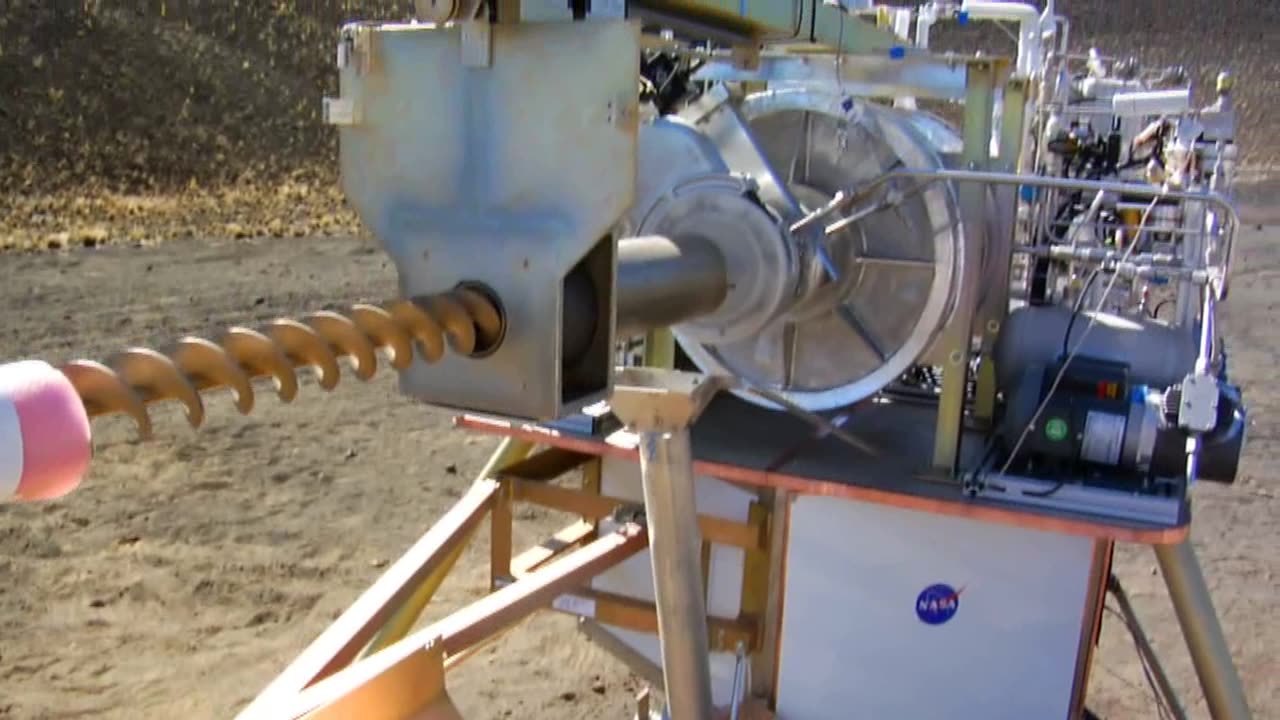Premium Only Content

NASA ANALOG FIELD TESTS, PREPARATION FOR LUNAR EXPLORATION.
"Welcome back to our channel space enthusiasts! In today's video we're taking a closer look at NASA's analog field tests a crucial part of their preparations for lunar exploration. These tests provide a simulated lunar environment on Earth to validate equipment test procedures and train astronauts for their upcoming missions to the Moon. So let's dive right in!"
1. Brief overview of NASA's lunar missions:
- Discuss NASA's plans to return humans to the Moon under the Artemis program.
- Highlight the significance of these missions including scientific research resource utilization and the establishment of a sustainable lunar outpost.
2. Importance of analog field tests:
- Explain why these tests are necessary to ensure mission success and astronaut safety.
- Discuss the challenges of the lunar environment such as reduced gravity extreme temperatures and radiation exposure.
- Emphasize the importance of testing equipment technologies and procedures in environments that accurately simulate lunar conditions.
3. Lunar analog field test sites:
- Showcase the various locations worldwide where NASA conducts its analog field tests such as the Haughton-Mars Project in the Arctic the Mojave Desert or the Black Point Lava Flow in New Mexico.
- Briefly describe why these locations are chosen for their resemblance to lunar features or conditions.
4. Simulating lunar environments:
- Detail how NASA creates lunar-like conditions during these tests including setting up habitats conducting extravehicular activities (EVAs) in simulated spacesuits and testing equipment specifically designed for lunar exploration.
- Discuss the use of lunar rovers and other vehicles to simulate the mobility challenges faced by astronauts.
5. Training astronauts:
- Explain how these field tests offer invaluable training opportunities for astronauts who will be venturing to the Moon.
- Describe how astronauts learn to adapt to the lunar environment practice scientific experiments and experience prolonged isolation similar to what they will face during their lunar mission.
6. Data collection and analysis:
- Discuss the data collected during analog field tests such as equipment performance crew health habitat efficiency and mission operations.
- Highlight how this data informs NASA's decision-making process and contributes to the improvement of lunar exploration technologies.
7. Lessons learned and future advancements:
- Summarize some of the key lessons NASA has learned from previous analog field tests and their impact on lunar mission planning.
- Discuss the ongoing advancements in technology and strategy resulting from these tests such as improving lunar habitats refining EVA procedures and optimizing resource utilization.
Conclusion:
"As we conclude today's video we hope you have gained a comprehensive understanding of NASA's analog field tests and their significance in preparing for lunar exploration. These tests play a crucial role in ensuring the success and safety of future Artemis missions to the Moon. We invite you to leave your comments down below and don't forget to subscribe to our channel for more exciting space-related content. Until next time keep looking up!"
-
 2:51:38
2:51:38
TimcastIRL
8 hours agoGovernment SHUTDOWN IMMINENT, Democrats Vow To BLOCK Trump CR w/The Native Patriot | Timcast IRL
166K93 -
 3:38:57
3:38:57
Digital Social Hour
1 day ago $15.04 earnedAndrew Tate EXPOSES the Truth About Legal Battles, Politics & Masculinity | Andrew Tate DSH #1231
45.5K21 -
 2:26:29
2:26:29
Laura Loomer
8 hours agoEP108: Dems Embrace Domestic Terrorism To "Get Trump"
54.5K18 -
 3:01:51
3:01:51
Right Side Broadcasting Network
10 hours agoWATCH: NASA’s SpaceX Crew-10 Launch
105K39 -
 2:06:17
2:06:17
Glenn Greenwald
9 hours agoJudge Orders Hearing on Columbia Student Deportation Case; Is the Ukraine Ceasefire Plan Serious? Trump Attacks Thomas Massie for His Budget Vote | SYSTEM UPDATE #422
120K162 -
 47:16
47:16
BonginoReport
12 hours agoTrump-Elon Bromance Triggers The Libs (Ep.03) - 03/12/2025
153K279 -
 4:03:41
4:03:41
Barry Cunningham
13 hours agoTRUMP DAILY BRIEFING: PRESIDENT TRUMP PRESS CONFERENCE | DEMOCRATS IN PANIC!
101K97 -
 1:56:30
1:56:30
Melonie Mac
11 hours agoGo Boom Live Ep 40!
57.2K7 -
 1:58:30
1:58:30
Kim Iversen
10 hours agoDOGE, Trump, Aliens and Remote Viewing: A Deep Dive into the Unknown
73K70 -
 1:20:08
1:20:08
Redacted News
12 hours agoPutin smells a TRAP as Ukraine agrees to Trump's U.S. ceasefire plan | Redacted w Clayton Morris
182K179